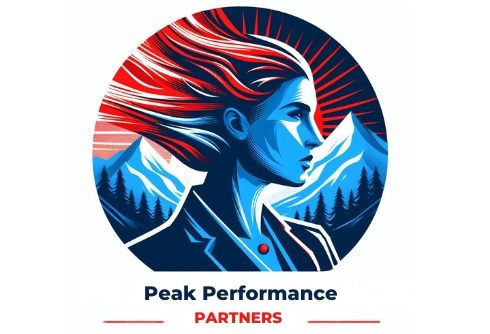Why does the notion of change resonate so deeply within the professional sphere? At the heart of every career transition lies the pursuit of something more—a quest not just for a different role or environment but for a profound shift in how we perceive our professional selves.
This blog embarks on a journey to unravel the essence of change in the professional landscape, emphasizing not merely the external markers of success but the internal transformation that accompanies them. Change, in its most impactful form, is about the evolution of our motivations, aspirations, and the perspectives we bring to our work. It’s about recognizing that moment when the familiar contours of our career no longer align with our growing desire for fulfillment, challenge, and purpose.
This realization is not an isolated phenomenon but a shared experience among many professionals who sense that their potential is not fully realized within the confines of their current roles. Understanding why this feeling of restlessness emerges—and acknowledging its validity—is the first step toward embracing the psychological benefits of change.
These benefits extend far beyond the immediate gratification of new job titles or environments; they encompass increased job satisfaction, personal fulfillment, and an invigorated excitement for future possibilities. By delving into the stories of those who have navigated their own career reinventions, this blog aims to illuminate the path for others.
It seeks to demystify the process of professional transformation, offering both inspiration and practical advice on recognizing the signs that it’s time for a change, and how to strategically embrace this change for growth. In doing so, it sets the stage for a deeper exploration of the strategies that facilitate not just survival but thriving in the dynamic landscape of modern work.
You’re going to find out about the psychological benefits of embracing change, and how it can lead to greater job satisfaction, personal fulfillment, and even excitement for the future. By understanding and harnessing these benefits, you’ll prepare yourself for the transitions ahead.
This isn’t just about theory; it’s also about the people who’ve successfully pivoted to new careers and how they made it happen. I’m here to help you with inspirational stories that illustrate the incredible journeys others have taken, showing that it’s entirely possible to redefine your career—and by extension, a part of your identity.
In my opinion, knowing when it’s time to move on is crucial. I’ll point out some key indicators, such as a lack of challenge, diminished passion, or perhaps a disconnect between your values and your work. These signs are your cues that a change might not just be beneficial, but necessary.
With a clear understanding of why change is essential and how it can positively impact your life, you’ll be primed and ready for the strategies that promote professional growth. In the next section, I’ll cover how lifelong learning, effective networking, and adaptability are central to not just surviving, but thriving in today’s ever-evolving workplace.
Strategies for Professional Growth in a Dynamic Workplace
In my opinion, the cornerstone of professional growth is lifelong learning. It keeps you sharp, relevant, and valuable no matter which direction your career takes. This isn’t just about taking a class or getting a certification; it’s about fostering a mindset of growth and curiosity.
You’re going to find out about the power of networking and mentorship. These are integral parts of your professional toolkit, connecting you with opportunities, insights, and the collective wisdom of those who’ve navigated challenges similar to yours. Remember, it’s about the relationships, not just the number of contacts in your phone.
Staying adaptable is critical as new technologies and methodologies reshape industries. Best practices for upskilling include regularly assessing the skills in demand within your industry and seeking out resources to learn and practice them. Don’t worry too much about mastering every new tool or trend; focus instead on cultivating a versatile skill set and an openness to learn.
Choose something that resonates with you when setting SMART (Specific, Measurable, Achievable, Relevant, Time-bound) goals for your career. They act as your roadmap, helping you navigate your professional path with clarity and purpose. Adjust your approach down the road if needed, as flexibility can often be just as important as having a plan in the first place.
Navigating the Professional Labyrinth: Insights and Tools for Success
Now, let’s zoom in on the practical tools and insights that can help you steer through the evolving landscape of professional growth. First off, taking stock of your transferable skills is a game-changer. These are the abilities you’ve picked up along the way that can open doors in different industries or roles. From communication and problem-solving to leadership and teamwork – these skills are your passport to new opportunities.
I’m going to touch on personal branding next. This isn’t just about your online image; it’s the essence of who you are as a professional. It’s what makes you recognizable and valued in the marketplace. Building a strong personal brand involves being consistent in your communications, whether that’s through a professional blog, LinkedIn profile, or networking events.
Digital platforms are indispensable in today’s job market. LinkedIn, online portfolios, and industry forums can serve as launchpads for your career. Using these tools effectively involves more than just setting up a profile; it’s about actively engaging, sharing your expertise, and connecting with thought leaders in your field.
Finally, let’s talk about the mental game. Resilience and adaptability are paramount in the face of change. Career sustainability comes from a mindset that’s open to learning and unafraid of failures. Developing this mindset involves embracing challenges, seeking feedback, and being willing to step out of your comfort zone. Trust me, resilience isn’t just a buzzword – it’s the armour you wear on the frontline of your career journey.
In the end, professional growth is about the cumulative effects of daily habits and choices. Your first attempt at pivoting or upskilling doesn’t need to be perfect. It’s a process, and you can always adjust your approach down the road. Choose strategies that resonate with you and take advantage of the opportunities around you. As I’ve been saying, a lot is happening very quickly in today’s job market, and staying proactive is your best bet. I really hope that you feel empowered to take that next step toward reinventing your career. And remember, no matter where you are right now, there’s always room for growth and new achievements.


